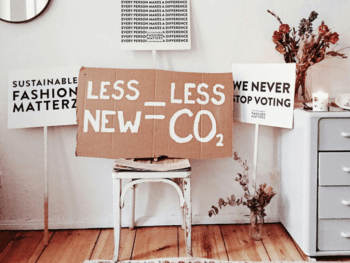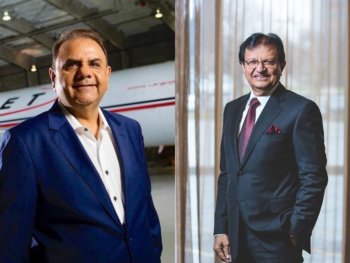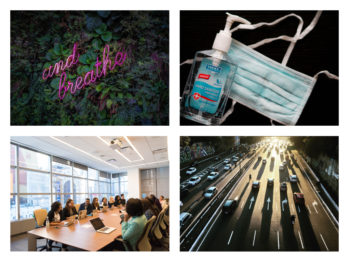Fostering team cohesion in today’s shifting and changing workplace is key. Renowned industrialist Andrew Carnegie describes teamwork as “…the ability to work together toward a common vision, the ability to direct individual accomplishments toward organizational objectives.” Cohesive workplace teams are just that, productive, efficient, creative, and engaged. Great teams translate into bottom-line benefits for organizations. For organizations, managers, and team members in the workplace, team cohesion is critical.
Dr. Monica Vermani is a Clinical Psychologist specializing in treating trauma, stress and mood & anxiety disorders, and the founder of Start Living Corporate Wellness. She is a well-known speaker and author on mental health and wellness. Her upcoming book, A Deeper Wellness, is scheduled for publication in 2021. Please visit: www.drmonicavermani.com.
Dr. Vermani has recently launched an exciting online self-help program, A Deeper Wellness, delivering powerful mental health guidance, life skills, and knowledge that employees can access anywhere, anytime at www.adeeperwellness.com.
In workplaces, team cohesion doesn’t just happen, it is carefully built on solid operational principles of good communication and delineation of roles, responsibilities, and goals. And on a day-to-day basis, as teams interact within their group, across teams, and in the organization as a whole, it is critical that team members feel supported in their roles and tasks.

The Human Factor Of Team Cohesion
Cohesiveness is the extent to which team members stick together and remain united in the pursuit of a common goal. A team is said to be in a state of cohesion when its members possess bonds linking them to one another and to the team as a whole. Morale is high in cohesive teams, due to great member communication, a friendly team environment, loyalty, and team member contribution in decision-making. Highly cohesive teams are more committed to their goals and activities, are happy when the team succeeds, and feel part of something significant, all of which increases self-esteem which in turn increases performance.
As human beings, we are social animals. It’s in our nature to live, work and achieve together. Teamwork is something we’ve all experienced, from a young age. As children, we were introduced to teamwork in the classroom, in the playground, and on the playing fields. There we first experienced the challenges and rewards of being part of a team. We learned how to relate to and rely on others, work together, and experience the highs and lows of being part of a team. As children, we probably never heard the term team cohesion, but we sure knew the difference between being on a good team, one that never quite came together, and one that was struggling.
When Individuals Struggle, Team Cohesion Suffers
Since a great deal of team engagement is impacted by the relationships of team members, many organizations with staff working remotely have faced tremendous and unprecedented challenges in keeping teams engaged, focused, and inspired over the past 18 months.
When individuals struggle with their mental health, they experience difficulties in relating to others. As a result, team cohesion suffers and declines. Over the course of the pandemic, the mental health of individuals has suffered tremendously. A 2020 Angus Reid Institute poll found that 50 percent of Canadians reported a decline in their mental health since the pandemic began. In a 2020 Morneau Shepell survey of Canadian workers, 81 percent of respondents reported that the pandemic was negatively impacting their mental health. And in January of 2021, Morneau Shepell’s monthly Mental Health Index reported that 35 percent of supervisors said they were concerned about the mental health of their employees, with 27 percent reporting that their employees were less productive than they were pre-pandemic.
While we are beginning to understand the significant impacts of the pandemic on employee mental health, the extent to which employee mental health will negatively impact team cohesion in the future remains unclear. What we must realize is that when individuals are struggling, workplace team dynamics are bound to be impacted, and efforts to foster team cohesion will become more important than ever.

Forewarned Is Forearmed
As workplaces slowly return to normal in the coming months, many employees will continue to struggle with symptoms of anxiety, depression, high stress, and poor concentration. Team cohesiveness may be impacted by the negative effects of prolonged isolation. Many people will be returning to the workplace feeling isolated, disengaged and out of sorts. Employees may experience temperament issues, irritability, misinterpretation, anger, and lack of cooperation. Many people who have spent months operating outside of their traditional structured workday while juggling the demands of family, homeschooling, and their own workload, may struggle with returning to their previous work and personal routines, and find themselves off balance and struggling to adjust to the changes in their lives.
As we enter into a new phase, post-pandemic, forewarned is forearmed. It is imperative for companies to anticipate difficulties and plan to meet the challenges that lie ahead. Rebuilding and restoring team cohesiveness depends on it.
Uncharted Territory
In the months to come, as we move with the times beyond isolation and back to a world where employees and teams are able to come together in person, organizations will need to anticipate difficulties in restoring and fostering team cohesion. Specialized Wellness initiatives that target employee mental health concerns can play a key role in supporting employees and sustaining healthy teams and workplaces.
As we return to a post-pandemic new normal we are entering into uncharted territory. We can’t predict the full extent of the impact of the pandemic on employee morale, team cohesion, and employee mental health. But we do know that individual mental health has declined and that the current climate of uncertainty raises anxiety and depression, and stress levels in individuals. And we know that creating a supportive post-COVID team cohesion will require great care and attention to employee mental health.
Dr. Monica Vermani’s tips on creating a supportive post-COVID workplace
Cohesive, engaged, and focused teams that can work together to meet goals are critical to the success of every organization. Planning for success — with supports that address employee anxiety, anger, conflict, miscommunication and low motivation— will be a critical component of restoring and supporting team cohesion.
Organizations that anticipate and make the effort to position themselves to meet the challenges of post-COVID employee mental health will be better prepared to mitigate the human relationships that impact team cohesion. Creating a supportive post-COVID workplace culture as we return to business as usual needs to include effective mental-health supports that meet employee needs. A commitment to employee wellness will foster a workplace where employees, teams and organizations as a whole can thrive.
Main Image Photo Credit: www.unsplash.com
Dr. Monica Vermani
Author
Dr. Monica Vermani is a Clinical Psychologist who specializes in treating trauma, stress, mood & anxiety disorders and is the founder of Start Living Corporate Wellness. Her book, A Deeper Wellness, is coming out in 2021. www.drmonicavermani.com














































































































